Nephthys – Egyptian Funerary Goddess Who Also Protected The Pharaohs While They Were Alive
A. Sutherland - AncientPages.com - Egyptian goddess Nephthys - primarily associated with the myths of Heliopolis - was a funerary goddess and played a lesser role to her sister Isis. Otherwise, nothing is known about her before her appearance in these myths.
Nephthys goddess on the sarcophagus of Ramses III. Credit: Tangopaso - Public Domain
Her Egyptian name is "nebet-hut," which means "mistress of the mansion " However, any specific clue link to her true origin was never given. She was the daughter of Geb that symbolizes the beginning of everything in Egyptian mythology. Geb represented the beginning, fertility, and the earth. On the other hand, Nut was the mother goddess of all gods. Isis and Osiris were twin brothers of Nephthys, who eventually married another of his brothers, Seth.
It is confirmed that Nephtys' reign as an important goddess lasted all the way through the last Egyptian dynasty. It is also important to remember that she was one of the most ancient deities in Egyptian mythology.
In the Osiris myth, Nephtys (Nephthys) was one of the four deities involved in the Osiris myth, where she symbolically represented a partner to the god Seth. At the same time, the goddess Isis was the wife of Osiris. Based on one story, Nephthys had a sexual relation with Osiris, resulting in the birth of Anubis.
However, when Osiris is murdered, Nephthys - morning his death - helps her sister search for him, which is attested in the Pyramid Texts, where the goddess is "the one who floats in a night barge, while her sister Isis, in a day barge").
At first, she participated in the search for his body. Once the body of the murdered Osiris was recovered, both goddesses carried out a rite that allowed Osiris to be brought back to life.
It is believed that the tradition of embalming or mummifying the dead arose as a way to avoid the deterioration of the body of the deceased. Both sisters participated in the embalming of Osiris's body and helped him transit to the afterlife. Nephthys protected his mummy, standing at the head of his bed.
Nephthys was the companion of the god Ra during his night voyage through the underground realms.
As a funerary goddess, Nephthys was one of the most important deities protecting the dead. She was also one of the four divine guardians of the canopic jars and other items in royal and private burials. Due to her role, Isis, Selket, and Nephthys are closely associated with falcons, and their depictions were often shown on coffins in the form of winged women as protectors of the dead.
The two sisters were opposite to each other, like the mysterious death and night. Still, they acted together, and Nephthys was Isis' complement, symbolizing inferiority, infertile lands, and passivity.
Statue of Nephthys goddess at the Louvre Museum. Credit: Public Domain
In her relationship with the god Seth, Nephthys never had a child, and according to the Pyramid Texts, she was known as "the woman who has no vagina." Both Seth and Nephthys symbolized the world's chaos and destruction, while her sister in relationship with Osiris represented order and harmony.
She was depicted as a woman with a hieroglyph of her name on her head, often with two horns. Between them, a disc was placed that referred to this goddess as part of the solar cult. In the engravings of the time, it was located at the head of the deceased.
She had a connection with the Lower World but was also often entitled "The Goddess of Creation who lives in everything." Despite Nephthys' important role in ancient Egyptians' funerary beliefs, however, Nephthys had no temples or any representative cult center of her own.
According to myths and legends, Nephthys was a beautiful deity who protected the deceased and the pharaohs while they were alive and later when they died.
Written by – A. Sutherland - AncientPages.com Senior Staff Writer
Copyright © AncientPages.com All rights reserved. This material may not be published, broadcast, rewritten or redistributed in whole or part without the express written permission of AncientPages.com
More From Ancient Pages
-
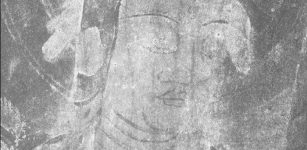 1,300-Year-Old Paintings Depicting Eight Buddhist Saints Revealed By Infrared Cameras
News | Oct 1, 2020
1,300-Year-Old Paintings Depicting Eight Buddhist Saints Revealed By Infrared Cameras
News | Oct 1, 2020 -
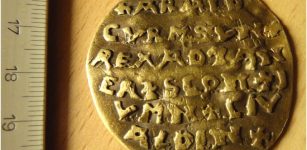 Mysterious Golden Curmsun Disc And Its Connection To King Harald Bluetooth And The Legendary Jomsvikings
Artifacts | Apr 13, 2022
Mysterious Golden Curmsun Disc And Its Connection To King Harald Bluetooth And The Legendary Jomsvikings
Artifacts | Apr 13, 2022 -
 World’s Oldest Moon Map Carved Into Ireland’s 5,000 Year-Old Tomb At Knowth
Featured Stories | Jun 25, 2014
World’s Oldest Moon Map Carved Into Ireland’s 5,000 Year-Old Tomb At Knowth
Featured Stories | Jun 25, 2014 -
 Mysterious Yamacutah – A Sacred Native American Indian Shrine
Artifacts | Sep 18, 2020
Mysterious Yamacutah – A Sacred Native American Indian Shrine
Artifacts | Sep 18, 2020 -
 Underground World Of Cerra Naztarny Where The Navajo And White People Once Lived Peacefully Together
Featured Stories | May 29, 2021
Underground World Of Cerra Naztarny Where The Navajo And White People Once Lived Peacefully Together
Featured Stories | May 29, 2021 -
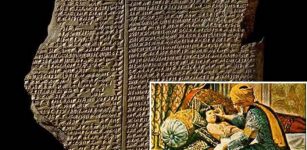 Clay Tablets Reveal Sumerian Doctors Treated Disease With Spells Of Magic And Medicine
Archaeology | Feb 13, 2018
Clay Tablets Reveal Sumerian Doctors Treated Disease With Spells Of Magic And Medicine
Archaeology | Feb 13, 2018 -
 Study Sheds Light On Life Beyond Rome’s Frontier
Archaeology | Jun 2, 2022
Study Sheds Light On Life Beyond Rome’s Frontier
Archaeology | Jun 2, 2022 -
 On This Day In History: Brazil Was Officially Discovered – On Jan 26, 1500
News | Jan 26, 2017
On This Day In History: Brazil Was Officially Discovered – On Jan 26, 1500
News | Jan 26, 2017 -
 Mythical Kingdom Of Prester John – Did It Exist?
Featured Stories | Mar 21, 2016
Mythical Kingdom Of Prester John – Did It Exist?
Featured Stories | Mar 21, 2016 -
 Secret Catacombs With Incredible Ancient Skeletons Covered In Priceless Jewelry
Featured Stories | Nov 20, 2018
Secret Catacombs With Incredible Ancient Skeletons Covered In Priceless Jewelry
Featured Stories | Nov 20, 2018 -
 Riddle Of The Two Calicuts And How We Got History Wrong
Archaeology | Jan 20, 2023
Riddle Of The Two Calicuts And How We Got History Wrong
Archaeology | Jan 20, 2023 -
 Deadly Catastrophe In Pompeii And An Overlooked Piece Of The Well-Researched Disaster
Archaeology | Jul 18, 2024
Deadly Catastrophe In Pompeii And An Overlooked Piece Of The Well-Researched Disaster
Archaeology | Jul 18, 2024 -
 Strange Case Of The Italian Doppelganger – Collision Of Parallel Timelines? Part 2
Featured Stories | Oct 16, 2019
Strange Case Of The Italian Doppelganger – Collision Of Parallel Timelines? Part 2
Featured Stories | Oct 16, 2019 -
 Mystery Of Giant Ancient Statues And A Vanished Civilization With Unusual Physical Characteristics – Strange American Connection – Part 2
Ancient Mysteries | Aug 20, 2020
Mystery Of Giant Ancient Statues And A Vanished Civilization With Unusual Physical Characteristics – Strange American Connection – Part 2
Ancient Mysteries | Aug 20, 2020 -
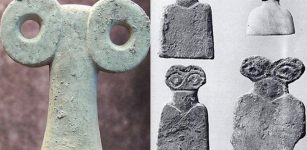 Remarkable Ancient Statues From The Eye Temple – Unique Legacy From Tell Brak, Syria
Artifacts | Jul 20, 2018
Remarkable Ancient Statues From The Eye Temple – Unique Legacy From Tell Brak, Syria
Artifacts | Jul 20, 2018 -
 Strangest Maps Ever Created – You Have Never Seen Our World Like This!
Featured Stories | May 18, 2022
Strangest Maps Ever Created – You Have Never Seen Our World Like This!
Featured Stories | May 18, 2022 -
 Ancient Copper Ingots Are Unlocking Iron Age Secrets
Archaeology | Dec 13, 2021
Ancient Copper Ingots Are Unlocking Iron Age Secrets
Archaeology | Dec 13, 2021 -
 Fenrir Killed At Ragnarok By Vidar Who Avenged His Father Odin’s Death
Featured Stories | Dec 10, 2018
Fenrir Killed At Ragnarok By Vidar Who Avenged His Father Odin’s Death
Featured Stories | Dec 10, 2018 -
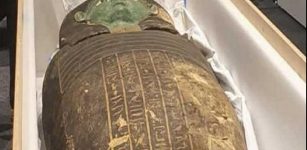 Egypt Recovers Ancient Wooden Coffin From Houston Museum In The US
Archaeology | Oct 4, 2022
Egypt Recovers Ancient Wooden Coffin From Houston Museum In The US
Archaeology | Oct 4, 2022 -
 Surprising Ancient Signs Found On The Ceiling Of An Egyptian Temple In Saqqara Could Rewrite History
Featured Stories | Oct 29, 2024
Surprising Ancient Signs Found On The Ceiling Of An Egyptian Temple In Saqqara Could Rewrite History
Featured Stories | Oct 29, 2024


